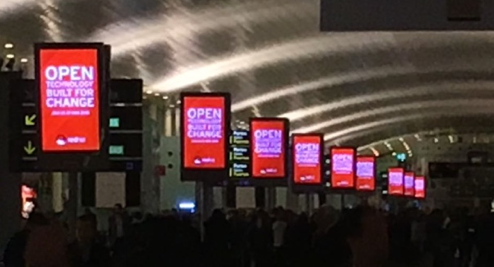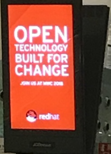It was quite the hectic but extremely successful week here at Mobile World Congress 2018 – the world’s largest mobile industry gathering with more than 100,000 attendees, which added to the hubbub of cultural, sporting, entertainment, industry and gastronomical diversity that is Barcelona.
So, what’s all the buzz about this year? Not surprisingly, the hot topics on everyone’s tongues were 5G, edge clouds (aka mobile edge computing or MEC), artificial intelligence (AI), IoT, video, and blockchain. There were many other technologies pushing the boundaries of our minds like drones, facial recognition, and even virtual reality that enables robots to perform critical medical procedures (even surgery!) on patients many miles from their physicians.
Mobile World Congress did not disappoint. We saw Samsung, LG, Nokia and many more unveiling their latest handsets, smart watches, wearables, pop-up cameras, and tablets. We all know the mobile device-driven world catalyzes our digital economy, and with that in mind, all of the operators were highlighting their accelerated progress towards 5G.
So, amongst all of this frenzy of mobile devices and 5G, what was new from Red Hat at the conference? How does Red Hat support 5G? Red Hat has already showcased the open telco framework it developed to support 5G, and we used Mobile World Congress to demonstrate it for our customers and partners again this week. As communications service providers (CSPs) work diligently to improve their capabilities as digital service providers, the Red Hat open telco framework helps them build an agile, digital services platform and make that transition a reality.
The open telco framework combines three agile open platforms – virtualized network infrastructure, data management, and application development. Red Hat has developed these three open platforms to support the transformation that operators are undergoing to build out their 5G networks. The three open platforms interoperate horizontally with common management, automation, toolsets, storage and real-time telemetry from the centralized data center, to the operators’ points of presence, to the enterprise edge sites (vCPE) and the virtualized radio (vRAN) sites.
What specific announcements and news for Red Hat did we see at Mobile World Congress? First and foremost, we were invited onto the stage this year with a keynote by our CEO, Jim Whitehurst, who talked about how the digital economy can continue to flourish with the right foundations in place to accelerate innovations from networks to security features, compelling services and content, to agile companies and culture.
Hundreds of attendees at our booth and online joined a lively panel discussion, Red Hat Live @ MWC: The Future of Telco is Open, on 5G, MEC, AI, blockchain, IoT, and the future of CSPs. The panel featured Dr. Ray Mota, CEO and principal analyst at ACG Research and Azhar Sayeed, chief architect at Red Hat, and me.
Amid the hundreds of customer, press and analyst briefings at the show, Red Hat also showcased many Red Hat-powered operator and partner solutions including: Virtual central office (VCO) for vCPE, Elisa Self-Organizing Networks (SON) for network automation, Vasona Networks virtual MEC, and MYCOM OSI Telco Cloud Assurance.
So, when will we get to 5G? Most operators are accelerating their 5G trials now, and we expect to see faster rollouts in major urban centers around the world, with expansion driven by the need for quicker return on investments (ROI) for their enterprise customers. As we believe agility is really the only sustainable advantage in any industry, the Red Hat open telco framework is designed to help operators take advantage of their 5G networks to deliver innovative applications and services to people when and where they matter.
Whew! Another Mobile World Congress has wrapped up. Exciting times are ahead. See you all again next year!
关于作者
Ian is Chief Technologist, Global Service Provider Business at Red Hat, the world’s leading provider of open source technologies. Ian brings more than 30 years of engineering, business, and telecommunications industry leadership to Red Hat. Acting as a catalyst and trusted advisor, Ian brings together a wealth of industry and open source community insight to help our customers flourish in the digital economy.
More recently, Ian was responsible for global service provider architecture at Cisco, leading their SDN/NFV portfolio vision and business transformation strategy. With his extensive background in system engineering, product management, and business development, Ian has proven expertise in helping organizations navigate and succeed in today’s fast-paced competitive environment.
产品
工具
试用购买与出售
沟通
关于红帽
我们是世界领先的企业开源解决方案供应商,提供包括 Linux、云、容器和 Kubernetes。我们致力于提供经过安全强化的解决方案,从核心数据中心到网络边缘,让企业能够更轻松地跨平台和环境运营。



